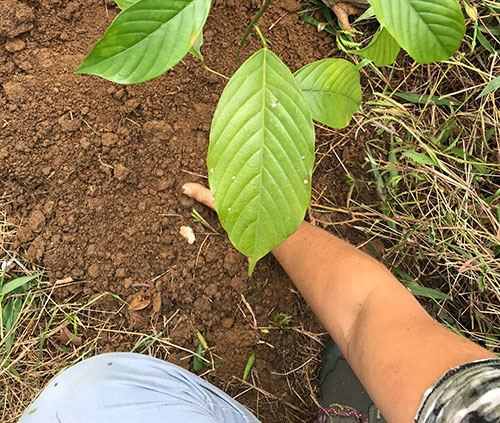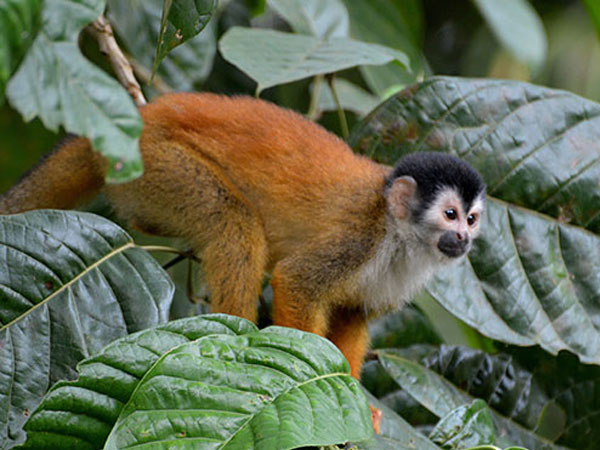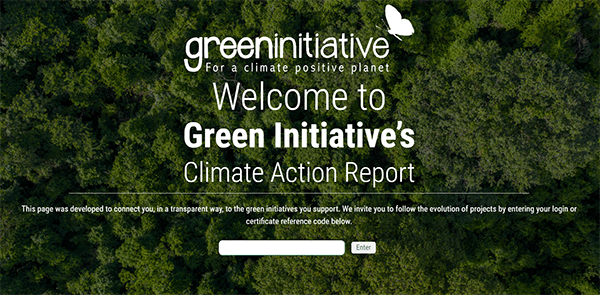CEPA CARES
We’ve never had a better chance …
… to help make the world greener.

As a common initiative between CEPA and CEPA Foundation,
in 2018 we evaluated how much our organizations contribute to the climate crisis
and set specific goals on how our climate impact can be mitigated.
Our Climate Action Goals
Since October 2019, we have been involved in climate and nature-positive actions
As part of our Climate and Nature Action Plan to compensate for the emissions and environmental impact of our study abroad participants, native trees are planted in Costa Rica's Osa Peninsula through the non-profit Saimiri Foundation, and carbon offsets have been secured through UN-certified projects.
Number of trees planted by CEPA for study abroad participants:
9,923 trees
Tonnes of CO₂ offset by CEPA:
4,978 tonnes
Our Climate Action Goals
CEPA is committed to positively impacting climate and social sustainability and strives to be a leader in environmental sustainability within the field of international education. As part of this commitment, we offset the carbon footprint of our company's operations and the footprint created on-site by our study abroad programs in Europe. Additionally, CEPA goes the extra mile by funding environmental projects that plant native trees for each participant in our programs.
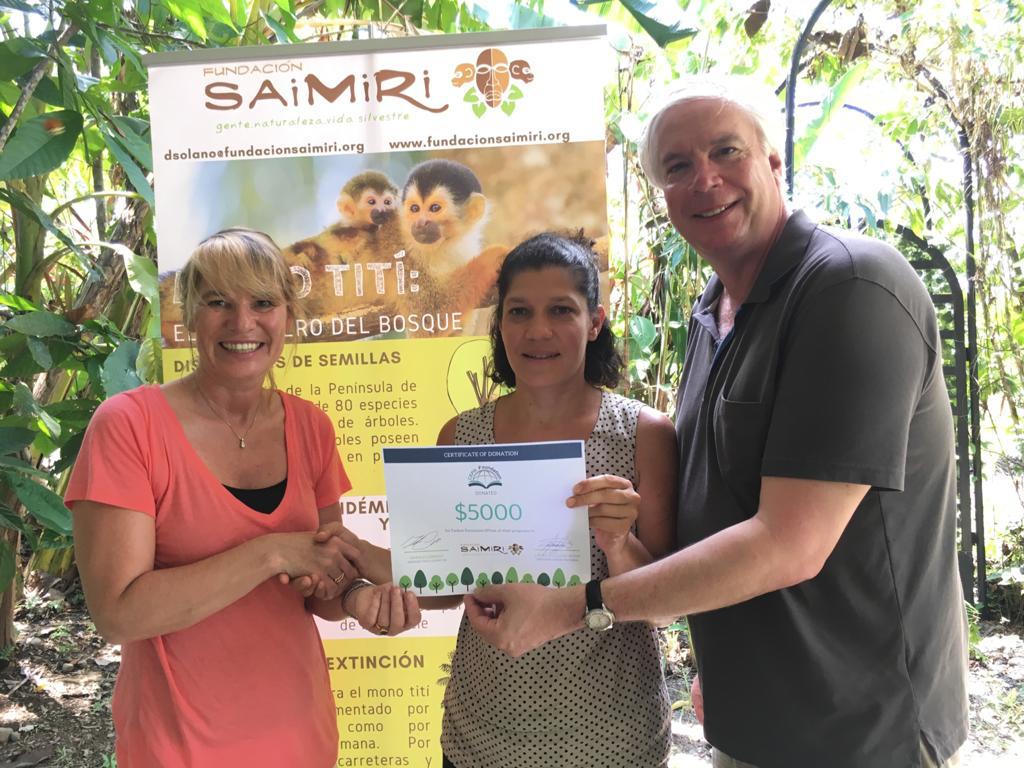
Become a Carbon Neutral Study Abroad Organization
CEPA is certified by Green Initiative for its CO2 footprint management and offset. In partnership with the Saimiri Foundation and the Green Initiative, CEPA is committed to planting trees for ecosystem restoration and purchasing carbon credits to offset its Study Abroad Programs and operational CO2 emissions.
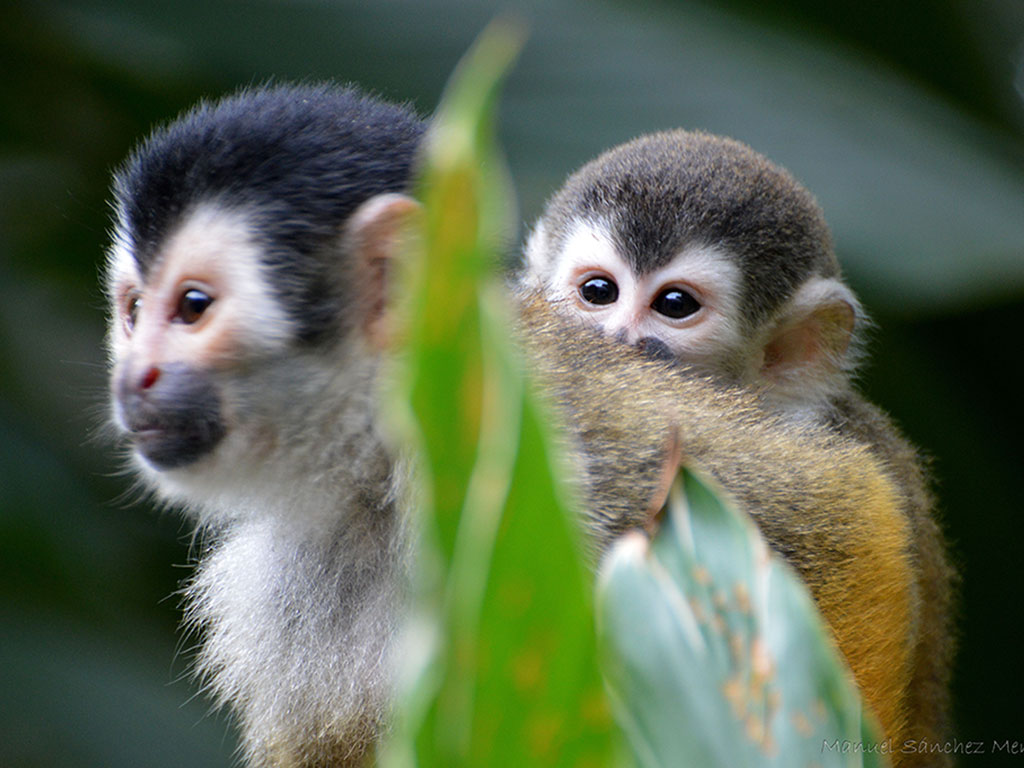
Support Rainforest and Ecosystem Conservation Projects
Support service-learning and conservation projects at the Saimiri Foundation by planting native trees and vegetation to restore the natural habitat of endangered species in the area, such as primates.
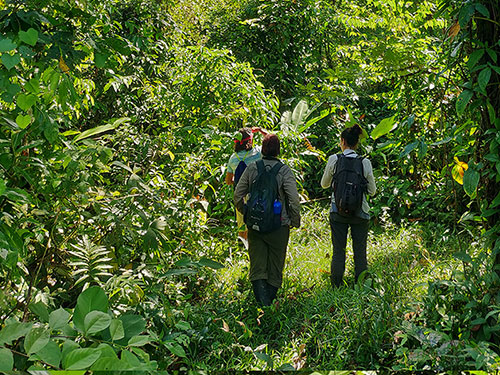
Make our Study Abroad Programs Nature Positive
Students and faculty automatically reduce the environmental impact of their study abroad experience because CEPA voluntarily compensates the CO2 emissions created during their program and plant trees for ecosystem restoration, through CEPA’s Nature Positive Project in Costa Rica and carbon credits (CERs).

Climate Education and Sustainable Travel
As part of our long-term strategy, we hope to inspire, encourage, and educate our partners and participants by giving them the information and tools needed to be more responsible and make study abroad a force for good.
What is our strategy to reach our goals?
"CEPA CARES" is our climate action pledge to manage our Co2 footprint, which means we:
1. Measure
CEPA commissioned Green Initiative to:
- Measure its carbon footprint
- Facilitate its compliance with new regulations and climate standards
- Provide recommendations to reduce its carbon footprint
- Monitor its carbon reduction project for independent verification of mitigation partners
Green Initiative's Responsibilities:
- Support CEPA in the Nature Positive Services project design
- Make the Green Initiative Report Page platform available to CEPA and its University partners
- Provide technical assistance and execute the review of Fundación Saimiri Forest Restorations Reports
- Engage with CEPA and Saimiri Foundation in quarterly performance evaluations

Green Initiative is a strategic partner of the United Nations Climate Neutral Now
Learn more about the Green Initiative > www.greeninitiative.eco
2. Reduce
Reduce carbon emissions resulting from CEPA office and operations such as energy use, air travel, paper consumption, and heating oil. CEPA will implement the recommendations made by Green Initiative in different phases.

The Carbon Neutral Certificate, issued by Green Initiative, is the main certification of climate responsibility that recognizes the achievement of neutralization of Greenhouse Gas (GHG) emissions, of CEPA organization and services.
1. Measure our emissions
Co2 emissions are measured and evaluated following the global GHG Protocols
2. Reduce our emissions
Make climate-smart changes in our office activities and services
3. Compensate our emissions and beyond
Compensate emissions through off-setting, including volunteer actions for forest restoration and Certified Emission Reductions (CER's).
4. Educate our partners and students
Strategy to be developed and implemented in 2023.
Heating
- Performing an energy audit to identify points of heat loss that could be addressed through better insulation, caulk, or weather-stripping
- Increasing the frequency of furnace/boiler maintenance to at least once per year
- Installing programmable thermostats that turn down the heat when no one is present
- Transitioning to a heating system that uses natural gas or other energy sources that emit less CO2e than heating oil
- Avoiding blocking the radiators with furniture or other objects that may disrupt the flow of heat.
Air Travel
- Increasing the use of videoconference systems or other remote-work technologies to cut down on air travel
- Maximizing the value of business trips by consolidating meetings and other activities, which may require increasing the average length of stay
- Favoring airlines with newer fleets, emissions-reduction policies, or carbon-offset programs
Energy
- Upgrading all electrical equipment to “category A” energy-efficiency standards, the upfront expense of which will be offset by reduced electricity costs over the long term
- Adopting an overall energy-efficiency plan that includes installing energy-saving lightbulbs, disconnecting electrical appliances when not in use, regulating the use of heating
and cooling, limiting the use of lighting during daylight hours, and reorganizing the layout of facilities to maximize their energy efficiency
Paper Consumption
- Increasing the use of online publications, videos, and other digital media, and using printed publications only when strictly necessary
- Using lightweight paper types, sustainably produced natural inks, or environmentally friendly paper brands
- Reducing the amount of paper used by printing on both sides of all documents
3. Compensate
Our goal is to plant 20,000 trees by the year 2030. It is important to provide our stakeholders with the necessary information and options to allow them to make climate-friendly travel choices whenever possible.
Who are our Climate Action partners for mitigation?
Our partner, the Saimiri Foundation, is a non-profit organization established in 2010. Based in Costa Rica, Saimiri’s main objective is rescuing, preserving, and protecting wildlife and natural resources in the Osa Conservation Area, one of the most biodiverse regions on the planet.
“By planting, monitoring, and maintaining these trees, we are not only reducing our carbon footprint, but also protecting the region's biodiversity and creating new jobs which, in turn, will help discourage illegal logging.”
Green Initiative offers support and know how to development agencies, national and multilateral financial institutions, companies, NGOs and governments that seek the implementation of a new path towards sustainability, through global standards for climate action, the decarbonization of production systems and the enhancement of ecosystem services.
With Green Initiative’s advice, CEPA is able to comply with climate regulations and contribute with the United Nations Sustainable Development Goals.
CEPA is listed on the UN website as an official signatory of the initiative.
Climate Neutral Certified
This Greenhouse Gas (GHG) footprint certification recognizes that emissions have been calculated and subsequently compensated within the scope of the United Nations Kyoto Protocol.
Through its participation in the United Nations Climate Neutral Now inititave,
CEPA purchases UN certified emission reductions (CERs), a type of carbon credit, to offset the remaining emissions which cannot yet be avoided.
Why did we choose these mitigation solutions and partners?
Through purchasing certified carbon offsets and at the same time, investing in a small, climate-smart forestry project,
we are directly addressing climate change in ways that make a big impact and also empower individuals in the local community.
Most of all, it was important that our efforts go far beyond carbon reduction.
They must be transparent, tangible, and provide multiple benefits, not only for the environment and wildlife,
but also for the local community and our university partners, faculty leaders, and study abroad students.
The reforested areas the Osa Conservation Area in Costa Rica will serve as forested corridors for wandering animals seeking for new habitats.
Improved air quality: Carbon capture through tree planting contributes to improved air quality. This can decrease health risks related to air pollution, such as respiratory and cardiovascular diseases, directly benefiting people by promoting better health and well-being.
Climate change mitigation: Carbon capture by planting trees decreases CO2eq emissions present in the atmosphere. This can limit the impacts of global warming, such as extreme weather events, rising sea levels, and changes in precipitation patterns. By contributing to climate stabilization, carbon sequestration protects human communities from the negative effects of climate change, including the loss of homes, livelihoods, and food security.
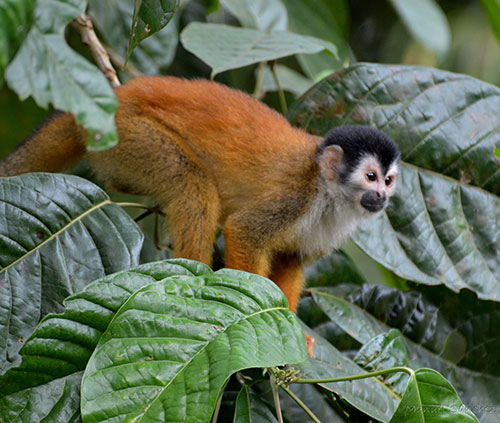
Benefits for the ecology, wildlife, and environment
Threatened animal species will have their habitat protected and restored like the central American squirrel monkey (Saimiri oerstedii), the Bairdii Tapis (Tapirus bairdii), as well as other important mammals.
- Conservation of the habitat of wildlife species, some of which are categorised as endangered, both nationally and internationally. It helps restore forest connectivity, and genetic exchange limited by fragmentation.
- It is an area that strengthens the protection of the Natural Protected Area "Corcovado National Park", controlling invasions. Helps reduce erosion, soil stabilization, and moisture retention. It increases plant cover and generates micro-climates favorable to microorganisms, fungi, orchids, among others.
- Carbon capture from surface and underground biomass. It provides ecosystem services (e.g. Water cycling, nutrient cycling) Landscape improvement (previously affected).
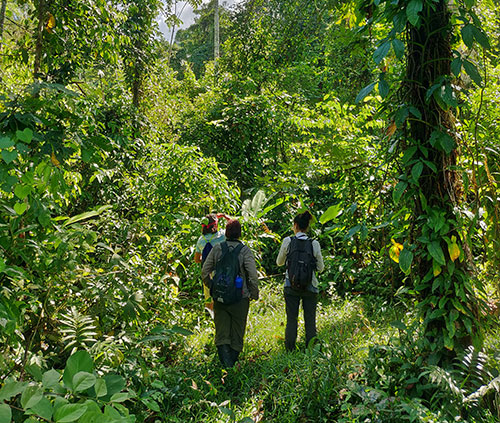
Social and Local Community Benefits
The project will provide seasonal employment for the local inhabitants such as a botanist who will maintain the tree nursery and local workers who will collect seeds of endangered trees, provide maintenance and planting support.
- Job opportunities: Generation of new jobs and economic opportunities. During tree planting, job opportunities are created at different stages of ecological restoration. This starts from the conception of the seedlings, through the placement of the seedlings in the greenhouse, to planting in the restoration area and subsequent monitoring. The jobs created also serve as learning opportunities for the locals, about restoration and nature.
- Strengthening local businesses: Seedlings for restoration come from community nurseries on the Osa Peninsula. In addition, the restoration of degraded areas supports tourism businesses over nature.
4. Educate
We will communicate CEPA's Co2 initiatives to our partner universities, service providers and networks, to inform how they can make low-carbon choices, measure their climate footprint and reduce and/or offset their carbon emissions of energy use, travelling, eating and consumption habits, electronic devices, etc.
Planning for the future...
Take Action - Support Us - Here is what you can do
Help us plant
twenty thousand trees
by 2030
The Goal: To plant 20,000 trees from over 150+ native species by the year 2030.
The reforested areas will serve as forested corridors for wandering animals seeking for new habitats and help protect the habitats of threatened animal species.
The project will provide seasonal employment for the local inhabitants such as a botanist who will maintain the tree nursery and a local worker who will collect seeds of endangered trees, and provide maintenance and planting support.
Threatened animal species will have their habitat protected and restored like the central American squirrel monkey (Saimiri oerstedii), the Bairdii Tapis (Tapirus bairdii), as well as other important mammals.
Offsetting Study Abroad
CEPA voluntarily compensates the CO2 emissions and the environmental impact of study abroad experiences created during a program through CEPA’s Carbon Reduction Project in Costa Rica + Carbon Compensation through Certified Emission Reductions (CER's).
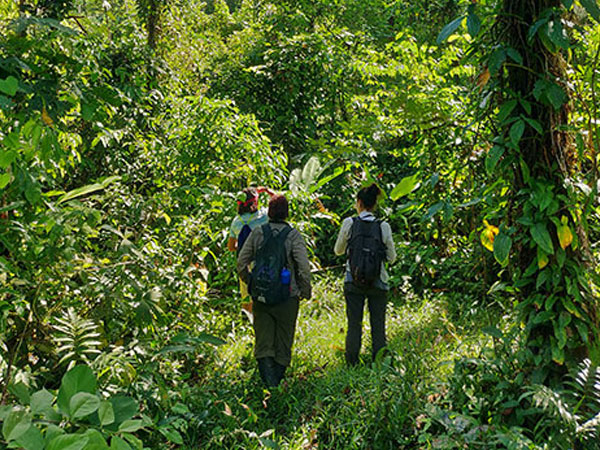
Plant trees for ecosystem restoration
Support CEPA's biodiversity project in the reforested areas the Osa Conservation Area in Costa Rica, providing forested corridors for wandering animals seeking for new habitats.
Access your certificate and report
Click on the link below and insert your Study Abroad Program code listed on your itinerary cover page to navigate through your exclusive offset and ecosystem restoration reports. You will also be able to geo-track the plot of land where your tree was planted and download a copy of your certificate.



